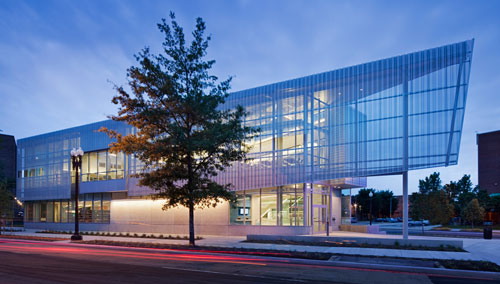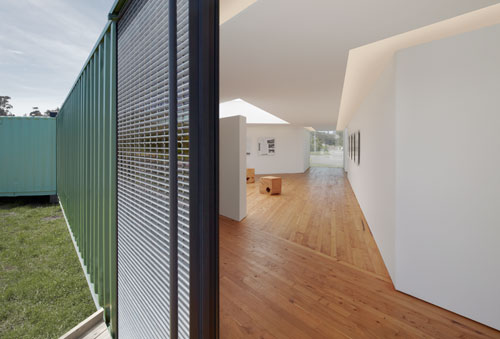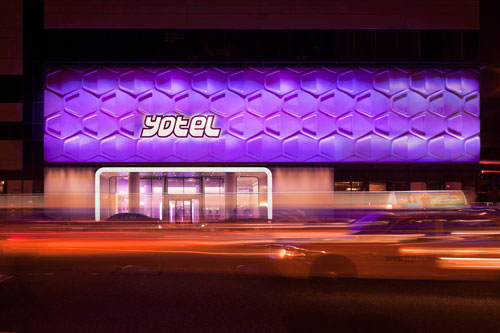Lighting within Limits
Tightening energy codes and standards, along with new technology, present lighting designers with opportunities and challenges.
![]() Continuing Education
Continuing Education
Use the following learning objectives to focus your study while reading this month’s Continuing Education article.
Learning Objectives - After reading this article, you will be able to:
- Discuss recent changes in energy codes as they pertain to lighting design.
- Describe strategies for energy-efficient lighting design that satisfy occupant comfort needs.
- Explain the relationship of advanced lighting controls systems and energy efficiency.
- Define terms and identify metrics relevant to lighting design.
Lighting designers can help assure that a project is adequately illuminated, set the tone of a space or a room, or emphasize architectural form. But their role is growing increasingly complex, in part because lighting-related technology is evolving at a breakneck pace, but also because energy codes are becoming progressively more stringent.
One illustration is the standard developed jointly by the American Society of Heating, Refrigerating and Air-Conditioning Engineers (ASHRAE) and the Illuminating Engineering Society (IES): 90.1, Energy Standard for Buildings Except Low-Rise Residential Buildings. The document, updated every three years, is often referred to in shorthand simply as "90.1." Most state energy codes are based on 90.1 or the International Energy Conservation Code (IECC) published by the International Code Council.
The latest version of 90.1, released in November 2010, is much more rigorous than its predecessor, says the U.S. Department of Energy (DOE). When comparing 90.1-2010 to 90.1-2007, DOE found an impressive 18.5 percent savings of site energy (the amount of heat or electricity consumed by a building as reflected in utility bills). In contrast, buildings that comply with 90.1-2007 are expected to save about 4.6 percent of site energy when compared with those designed to the 2004 version.
The savings achieved by the latest iteration of the standard can be attributed to several factors, including requirements for more efficient mechanical systems and for better-performing envelopes. However, tougher standards for energy consumption associated with lighting are also a major contributor.
THE QUALITY ISSUE
The 90.1 sets new limits on the amount of lighting that can be installed in buildings. For example, the whole building lighting power density (LPD) allowance for a library in 90.1-2010 is 1.18 watts per square foot, down from 1.3 in 2007, and from 1.5 in 2004. For an office, the limit in the most recent standard is 0.90 W/square foot, reduced from 1.0 in 2007, and 1.3 in 2004. With these guidelines in mind, many prescient lighting-design and daylight consultants aim for the lowest numbers possible.
For instance, Washington, D.C.-based MCLA used 90.1-2007 to plan the illumination scheme for the city's Watha T. Daniel - Shaw Neighborhood Library. But the building is below the LPD set by the 2010 standard. And for the research areas of Princeton's Frick Chemistry Laboratory, lighting designers from Arup devised a scheme with densities well under code limits.
 |
Architect: Davis Brody Bond
Click the image above to read about this project. Photo © Paul Rivera |
 |
Architect: Hopkins Architects with Payette Associates Click the image above to read about this project. Photo © Warren Jagger |
Even so, many sources worry that this downward trend will be difficult to sustain should it continue in future releases of 90.1. "Lighting power densities can't go much lower without affecting quality," says Robert Horner, director of public policy at IES. "People need enough light to read, work, and feel right," he adds.
The LPD limits in the standard aren't arrived at arbitrarily, says Eric Richman, senior research engineer at the Pacific Northwest National Laboratory in Richland, Washington, and chair of the 90.1 development team's lighting and electrical subcommittee. The LPD numbers are a product of a host of factors, he explains, including the efficiency of readily available luminaires and lamps, good design practice, and industry light-level recommendations. However, he does concede that there is little room for further downward adjustment. "There is no more squeeze left," he says.
Some sources, like Barbara Horton, president of HLB Lighting, New York City, point to developments with the voluntary standard LEED as an important catalyst, prompting designers to carefully consider how they are complying with LPD limits. LEED has recently introduced Pilot Credit 22: Interior Lighting—Quality. Its goal is to "ensure that energy efficiency isn't achieved at the expense of occupant comfort," explains Hayden McKay, a colleague of Horton's and HLB principal. According to McKay, HLB plans to seek the credit on a 500,000-square-foot corporate interiors project targeting LEED Gold certification.
If the credit works as intended and is officially incorporated into the rating system, it will encourage the selection of fixtures that do not create glare and of lamps that render color well and are long-lasting. It should also encourage designers to rely on reflective light and increase its effectiveness by specifying materials with above-minimum reflectance values for ceilings, walls, floors, and work surfaces. "These are all good practice recommendations, but many design professionals don't know how to apply them," says McKay.
CONTROLS IN CONTEXT
Instead of reductions in LPDs, Richman anticipates that future iterations of 90.1 will emphasize the use of lighting control systems as a means of achieving energy savings. He also points to extensive new requirements for such systems in the 2010 version of the standard. For example, although previous versions required occupancy sensors in certain types of spaces, the latest version includes an expanded list of mandatory applications. For spaces with manual controls, multilevel lighting (lighting configured to provide intermediary illumination levels between off and full lighting power) is now required. In addition, there are new stipulations for daylight harvesting controls. The standard offers incentives to designers for going beyond the minimum controls requirements, offering lighting-power adjustments for projects that deploy advanced strategies.
The expanded reliance on controls in 90.1-2010 essentially mandates what had been optional features. "Previously we would sell controls on the basis of their aggressive energy savings, but now their use is mandatory," says Gary Meshberg, president of the Lighting Controls Association, an industry trade group.
The new version of 90.1 acknowledges what lighting designers with expertise in energy-conserving design have known for some time: A low LPD isn't always the most effective measure of efficiency. Especially "with the advent of advanced lighting controls and growing use of daylighting, this metric becomes less relevant," explains George Loisos, principal of Loisos + Ubbelohde, an Alameda, California–based architecture, sustainability, and lighting consultancy. Among his recent projects is a largely daylit exhibition space whose sole power supply for plug loads and sensor-controlled lighting is a 4,440-W photovoltaic aray. Although the 1,500-square-foot pavilion has a relatively high LPD of 1.83, the lights are on for only short periods of time and typically not at full power, he says.
 |
Architect: Ogrydziak/Prillinger Architects Click the image above to read about this project. Photo © Tim Griffith |
Scott Guenther, a senior lighting designer at MCLA, Washington, D.C., points out that projects that deploy aggressive daylight-harvesting strategies "need to be designed for the worst-case scenario, which is night." With the Boston office of Behnisch Architekten, Guenther's firm is working on a 194,000-square-foot law school facility for the University of Baltimore. The building, due for completion early in 2013, consists of several interlocking volumes housing classrooms, faculty offices, administrative space, and a law library. Reliance on daylighting and advanced controls for lighting and other building systems, among other tactics, has put the project on track for LEED Platinum certification. Guenther says the building will have an LPD about 25 percent below code allowances, primarily due to the project's extensive use of glazing, not only on the exterior, but also the interior, which permits the sharing of electric illumination between adjacent spaces.
The law school building's sophisticated lighting controls will be coordinated with automated exterior shading louvers. The system will also give facilities staff the ability to operate and monitor the lighting remotely. Due to their complexity, programming and calibration of the controls will require several weeks, predicts Guenther.
TESTING AND TWEAKING
In 90.1-2010, this pre-occupancy adjustment and inspection step is now a requirement. And to ensure that the systems continue to work as intended, the standard also requires that documents such as a controls narrative and a schedule for recalibration are provided to the owner. However, there is no mechanism for making sure these materials are put to use. "An infrastructure for verification doesn't exist," says Richman. "The code official doesn't return to the building after it is occupied," he adds.
In addition to the mounting sophistication of controls systems and tougher code requirements, lighting design professionals need to stay on top of the seemingly constant introduction of new lamps, luminaires, and associated equipment. This hardware is changing at such a rapid pace that almost every project offers opportunities to deploy new products that promise longer lamp life, improved color rendition, and extended dimming capabilities. Designers like New York City–based Focus Lighting perform their own testing before specifying new products. They also include a standard notation on contract documents. The note requires that suppliers inform the project team if the most current version of a product is not the one specified so it can be thoroughly vetted before installation. Among Focus's recent projects is Yotel, a hotel in New York City with public spaces illuminated almost exclusively with LEDs.
 |
Architect: Rockwell Group
Click the image above to read about this project. Photo © Scott Frances/Otto |
The rapid rate of product development, the growing capabilities of control systems, and the increasing stringency of energy codes are all conspiring to make a carefully conceived illumination strategy more critical to the success of an architecture project than ever before. As Horton points out, her discipline "is no longer just about painting with light."
